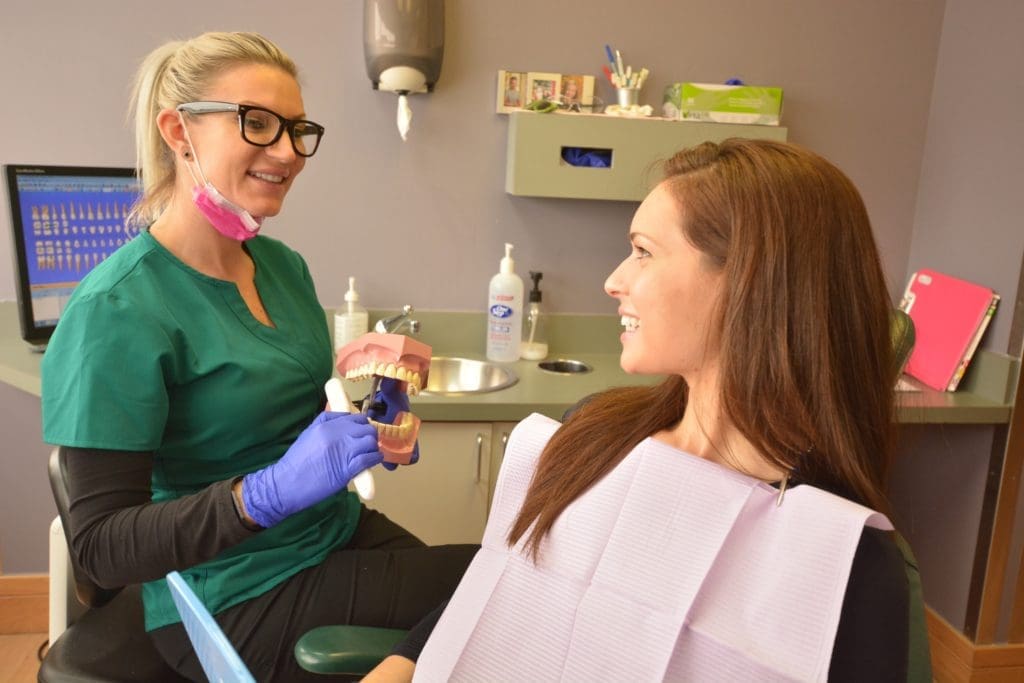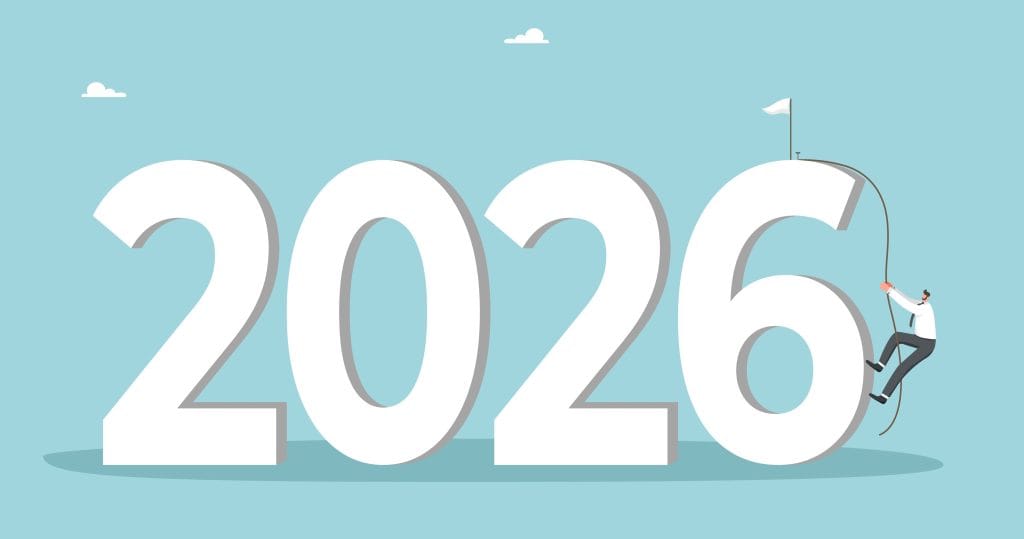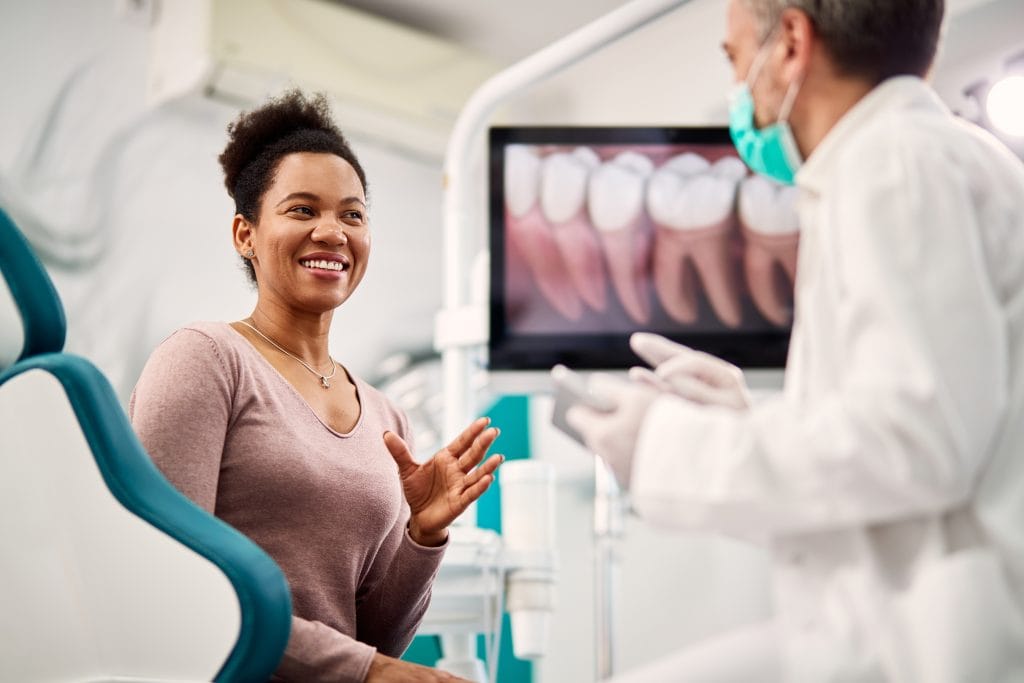Last updated on November 28th, 2025 at 06:44 pm
Last updated on November 4th, 2025 at 02:45 pm
 Hygienists play a huge role in the value and growth of a dental practice. Some very smart people have said that, ultimately, a dental practice is only as valuable as its hygiene department—and they wouldn’t be wrong.
Hygienists play a huge role in the value and growth of a dental practice. Some very smart people have said that, ultimately, a dental practice is only as valuable as its hygiene department—and they wouldn’t be wrong.
In fact, a properly run hygiene department should produce at least 30% of the total revenue of the practice. Your hygiene department is also the catalyst for long-term patient retention, along with where you’ll find most of the doctor’s production. So, you’re essentially losing money two ways (lost hygiene production and lost production on the doctor’s schedule) by not having a productive hygiene department that is continually growing!
(Related: 9 Ways to Fill That Last Minute Hygiene Opening)
But…this subject can also be a headache. The thought of adding more employees, staring at openings all over the hygiene schedule, or barely producing enough to cover the hygienist’s salary…can make the task of building a hygiene program look daunting to say the least.
With all of this in mind, how would you build a hygiene department that:
- Provides great service and helps your patient get (and stay) healthy?
- Is consistently productive with minimal down time?
- Retains patients for life?
- Produces a sizeable profit all on its own?
- Assists in finding treatment for the doctor and getting it accepted?
- Isn’t a source of stress and headaches?
(Related: 5 Hygiene Department Myths)
Well, to do all of that, you may want to book a free coaching session with us here. But until then, here are 6 steps to get you going on the road to growth and increased productivity!
1. Have an established periodontal protocol
 Too often, hygiene gets broken down into just cleaning teeth and trying to run on-time. But the hygienist CAN do so much more. And based on current statistics, quite a few patients need more than just a prophy.
Too often, hygiene gets broken down into just cleaning teeth and trying to run on-time. But the hygienist CAN do so much more. And based on current statistics, quite a few patients need more than just a prophy.
This makes it critical for the doctor to have an established philosophy and protocol for the diagnosis and treatment planning of periodontal therapy to be performed by the hygienist. And beyond this, it’s also important that everyone in the practice understands it and is on board.
(Related: 3 Ways to Boost Case Acceptance)
Periodontal disease is quite possibly one of the most underdiagnosed and undertreated condition in dentistry—and it’s no news flash that periodontal disease can affect a patient’s long-term oral and overall health.
As the doctor, you have to determine how this will work in your practice and disseminate this information to your hygienists.
2. Have the hygienist make a list of all procedures they can do (in compliance with laws and guidelines of your state)
Find out what your hygienist can and can’t do in your locale. Depending on where you practice, this may include mouthguards, sealants, scaling and root planning, debridement, whitening, etc. Make sure that they’re comfortable doing all these things and are doing them on a routine basis as diagnosed by the doctor. Not knowing, often leaves the hygienist reduced to just doing cleanings, which:
- doesn’t always get the patient healthy, and
- “shorts” the patient on their service
(Related: 5 Ways to Reduce Hygiene Cancellations and No-Shows)
In many cases, this can be the difference between a hygienist producing $800 per day vs $2000+ per day. I’ve spoken with many doctors who think they can’t afford a hygienist because they only produce $800 and have openings everywhere, but to be completely honest, they can’t afford NOT to have a hygienist.
If your hygiene department is underproducing, you need to fix it—not get rid of it!
3. Schedule your adult patients for enough time
When you’re looking to increase hygiene production, the natural inclination is to shorten the appointment times for prophys and try to fit as many patients in as possible. But that can be counterproductive.
counterproductive.
(Related: A “Full” Schedule is Not Always a Productive Schedule)
When offices focus on squeezing as many patients in as short a time as possible, it becomes a corporation “patient mill” kind of activity, where it’s all about the numbers; customer service suffers, and patients don’t get as healthy. I wouldn’t strive for the hygienist to do 10-12 cleanings a day. I’d rather the hygienist do fewer cleanings and more SRPs, mouthguards, etc., as well as have time for patient education about oral health and any outstanding treatment the doctor may have diagnosed. It’s more productive for the office as a whole.
In many cases, 50 minutes to a full hour for adults can be very profitable. You can figure out the amount of time that works for you.
The important thing is that there’s enough time for:
- A thorough cleaning,
- Patient education (on oral hygiene and/or outstanding treatment they may need)
- A comprehensive doctor exam
- The hygienist to assist the doctor with treatment acceptance.
4. Have a Scheduling Coordinator in charge of the hygiene schedule and production
 Someone needs to be in charge of the hygiene schedule: scheduling and confirming appointments and reaching out to patients who aren’t scheduled or are overdue. The effort involved in pulling this off is often underestimated. When this task is just lumped into the receptionist job, or lead hygienist or office manager, there’s just no way it can be done sufficiently.
Someone needs to be in charge of the hygiene schedule: scheduling and confirming appointments and reaching out to patients who aren’t scheduled or are overdue. The effort involved in pulling this off is often underestimated. When this task is just lumped into the receptionist job, or lead hygienist or office manager, there’s just no way it can be done sufficiently.
(Related: Should You Hire a Full-Time Scheduling Coordinator?)
That’s why it’s vitally important to have a Scheduling Coordinator. This person would also be in charge of the doctor’s schedule—although in a large office with multiple doctors and hygienists, you may have one employee dedicated to the doctors’ schedule and one to the hygiene schedule.
Believe me, a dedicated scheduler pays for themselves many times over by filling up the hygiene and doctor’s schedule with productive procedures—assuming they’re well-trained and are doing the right actions. And as a matter of fact, we teach the right actions in our Scheduler Coordinator Training Course on DDS Success—check it out!
5. Hygienist should be friendly and interested in the patient
There’s nothing worse than just sitting in your dental chair listening to your teeth getting scraped for an hour. The hygienist needs to be friendly and personable and have a great “chairside” manner.
(Related: How to Create First-Class Customer Service in a Dental Office)
The hygienist should talk to the patient and be genuinely interested in them—but that doesn’t necessarily mean they should just talk about movies or your vacation. Of course, you can ask how the kids are, but the main focus is oral hygiene and patient education.
Discussing the importance of hygiene goes a long way toward hygiene compliance. And an estimated 60-70% of existing patients have work that needs to be done, whether it’s been diagnosed or not. Talking with them about this needed treatment is an important role of the hygienist. If the patient has a chipped or missing tooth, the hygienist can’t diagnose anything, but they can talk to them about the importance of addressing the issue and how the doctor might want to do something about it. Case acceptance is a team activity, and the hygienist should help educate patients on their dental health.
6. Make sure you’re consistently adding hygiene days.
Depending on your new patient volume, you should strive to add one day of hygiene per week every 6-12 months. For example, if at the beginning of the year you have 4 days of hygiene every week (meaning one hygienist working 4 days a week), then by the end you should have at least 5 days. Then by the end of the following year you should have at 6 days every week (meaning that, for example, you’d have one full-time hygienist working 5 days a week, and a second part-time hygienist one day a week or some mixture thereof).
(meaning one hygienist working 4 days a week), then by the end you should have at least 5 days. Then by the end of the following year you should have at 6 days every week (meaning that, for example, you’d have one full-time hygienist working 5 days a week, and a second part-time hygienist one day a week or some mixture thereof).
(Related: How Your Hygienist Can Help Increase Case Acceptance)
If you’ve had the same number of hygiene days for years and haven’t added any—that means you’re losing patients! Think about it. If you’re adding new patients but not adding hygiene days, then where are these patients going? Certainly not into your recall program!
So, between your new patients and the efforts of the Scheduling Coordinator to bring overdue patients back in for cleanings, you should be adding at least 1 day per week of hygiene a year. And if you have a good reactivation protocol (which we also teach at the Profitable Hygiene Seminar), you could be adding more.
(Related: Ask Sabri: How Can I Make My Hygiene Department More Profitable?)
A stalled hygiene department is something that demands immediate resolution, because the longer it goes the more difficult it is to fix. All of a sudden you’ll find many patients haven’t been into the practice for 3 or 4 years, and now it’s more difficult to reactivate them.
Well, there you have it! Six steps to building a productive hygiene department. And like I mentioned earlier, there is a lot more to running a profitable hygiene department than just these 6 steps. To get a customized strategy for your office, book a free coaching session here.
We also have two online courses that can help in this area: The Hygiene & Patient Retention Course and Scheduling Coordinator Training Course as part of our subscription-based online training platform, DDS Success. In any event, I hope these tips helped, and if you need help immediately, feel free to call me at (800) 640-1140 or email me at chrism@mgeonline.com



No Comments
Be the first to start a conversation